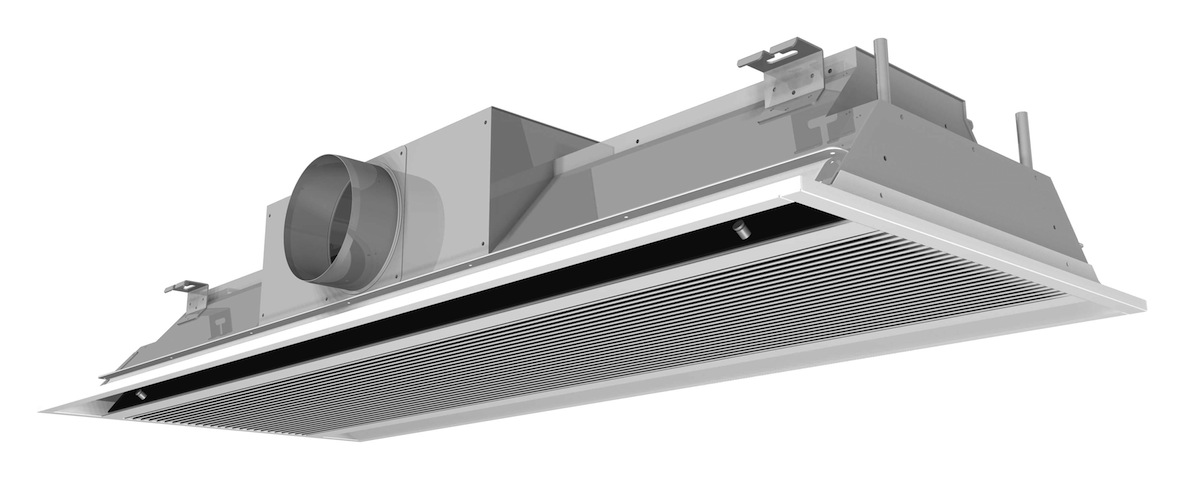A new book from ASHRAE and the Federation of European Heating, Ventilation and Air-Conditioning Associations (REHVA) provides guidance on designing chilled-beam systems.
The Active and Passive Beam Application Design Guide was produced through a collaboration of worldwide experts to give system designers a current, authoritative guide on successfully applying active and passive beam technology. Building on REHVA’s previously published Chilled Beam Application Guidebook, the new guide provides up-to-date tools and advice for designing, commissioning, and operating chilled-beam systems. It includes examples of active and passive beam calculations and selections.
Active and passive beam systems are energy-efficient solutions for spaces that require individual zone control and where internal moisture loads are moderate. “Active and passive beam systems provide good thermal comfort and energy and space saving advantages; and the operation of such systems is simple, with low maintenance requirements,” co-editor John Woollett said. “In a building where the goal is a low energy usage index, beams can be an excellent choice of indoor climate product.”
Although they are often referred to as “chilled” beams, in many cases active beams can be used for both heating and cooling. Active and passive beams are room air recirculation devices that transfer sensible heat to and from the space using water. In addition, conditioned primary air is ducted to active beams. Active and passive beams may be integrated with acoustic ceilings or independently mounted.
Related Stories
| May 22, 2014
Facebook, Telus push the limits of energy efficiency with new data centers
Building Teams are employing a range of creative solutions—from evaporative cooling to novel hot/cold-aisle configurations to heat recovery schemes—in an effort to slash energy and water demand.
| May 22, 2014
7 ways it pays to use BIM for data centers
Here’s where AEC firms and owners are getting the most bang for the buck when using BIM/VDC to coordinate data center projects.
| Dec 10, 2013
16 great solutions for architects, engineers, and contractors
From a crowd-funded smart shovel to a why-didn’t-someone-do-this-sooner scheme for managing traffic in public restrooms, these ideas are noteworthy for creative problem-solving. Here are some of the most intriguing innovations the BD+C community has brought to our attention this year.
| Sep 9, 2013
Top 25 continuing education courses on BDCuniversity
An overview of the 25 most popular continuing education courses on BDCuniversity.com.
| Jun 18, 2013
Report: HVAC occupancy sensors could slash building energy demand by 18%
Researchers at the DOE's Pacific Northwest National Laboratory conclude that significant energy savings can be achieved by varying ventilation levels based on the number of people in a given space.
| Apr 1, 2013
Half of building owners use 'smart' technologies, says survey
A survey of 291 building owners by IDC Energy Insights shows that 50% of owners use smart building technologies, such as HVAC controls, lighting controls, and analytics/data management.
| Mar 27, 2013
Small but mighty: Berkeley public library’s net-zero gem
The Building Team for Berkeley, Calif.’s new 9,500-sf West Branch library aims to achieve net-zero—and possibly net-positive—energy performance with the help of clever passive design techniques.
| Feb 3, 2013
Electronic surveying improves accuracy on BIM-driven hospital project
A mechanical contractor combines an electronic surveying tool with a BIM model to make significant productivity gains in a large-scale hospital project.















